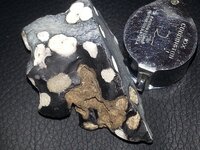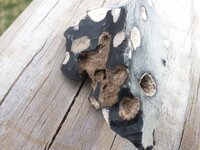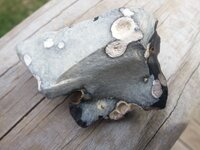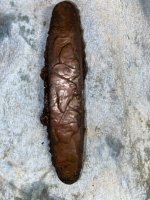Maine USA Beachcomber
Jr. Member
- Mar 2, 2016
- 43
- 14
- Primary Interest:
- All Treasure Hunting
Hi,
Found this on the beach after a storm yesterday mixed in with thousands of other rocks. Pretty certain it's snowflake obsidian. Can anyone explain to me what the brownish "inside" material is? It almost looks to me like the obsidian is a cortex around the snowflake material. Is this common?
Thanks for any insight.


Found this on the beach after a storm yesterday mixed in with thousands of other rocks. Pretty certain it's snowflake obsidian. Can anyone explain to me what the brownish "inside" material is? It almost looks to me like the obsidian is a cortex around the snowflake material. Is this common?
Thanks for any insight.









